Today’s most powerful sports and utility ATVs can reach top speeds of 80mph (128km/h). Moderate sized bikes averages at about 65 mph (104km/h). Youth ATVs have speed limiters so that the parent can decide exactly how fast it can go.
Table of Contents
The world record for the fastest speed on an ATV was recorded in 2008 by Terry Wilmeth of Oregon. He reached his top speed of 196.19 miles per hour on a Yamaha 700 Raptor, which was modified using a hybrid rocket thruster.
– Arctic Cat Thundercat 1000.
– Can Am Outlander X XC 1000.
– Suzuki LT500 (quadzilla)
– Yamaha Raptor 700R.
– Honda TRX 700xx.
– Bombardier DS650.
– KTM 525 XC.
– Yamaha YZF 450R.
80kph
– Put in a K&N filter. This type of air filter gives good air flow and is designed to increase acceleration on the ATV. …
– Put on four new tires. The size will depend on the size of the ATV. …
– Get a new AA exhaust pipe. …
– Change the gear ratio by adding or decreasing sprocket size on the ATV. …
– Purchase a big bore kit.
80kph
cc ATV Side by Side
— —— ————
200 40 MPH –
250 50 MPH –
300 53 MPH –
350 55 MPH –
The quadzilla is faster than the banshee in stock form. The banshee with even just a pipe kit really wakes up and is really fast. There is also many more mods available for the banshee than the LT.
80kph
40mph
stock for stock- Yfz450 beats a banshee buy about . 3-. 4 10th of a second. piped for piped- yfz450 still beats the banshee by about the same however many mods can be done to the banshee to make it faster than a Yfz at a more reasonable price.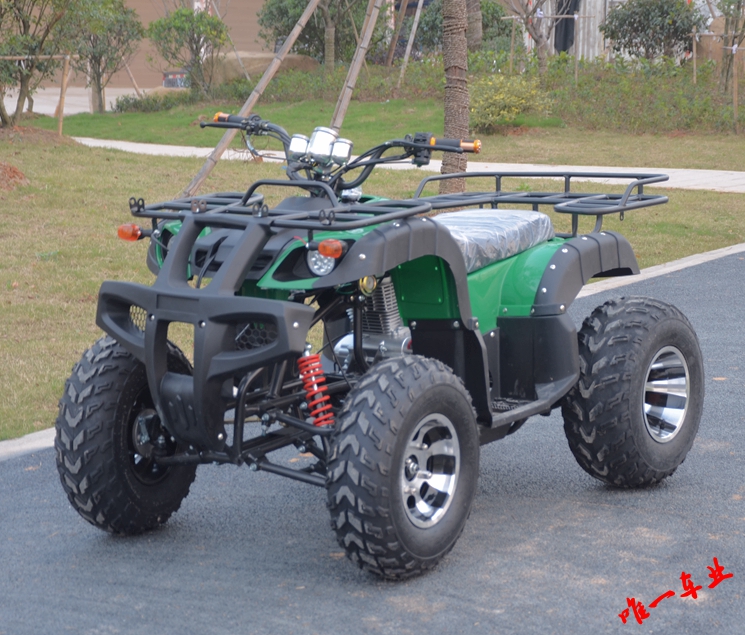
Grizzly 660 H.P. and Speed??? The Griz will hit 60 , reports of 65 mph.
40mph
Today’s most powerful sports and utility ATVs can reach top speeds of 80mph (128km/h). Moderate sized bikes averages at about 65 mph (104km/h).
cc ATV Side by Side
— —— ————
150 35 MPH 15 to 30 MPH
200 40 MPH –
250 50 MPH –
300 53 MPH –
Q: How fast can ATVs go? Today’s most powerful sports and utility ATVs can reach top speeds of 80mph (128km/h). Moderate sized bikes averages at about 65 mph (104km/h). Youth ATVs have speed limiters so that the parent can decide exactly how fast it can go.
If you are just planning on using the ATV for general riding around your property or easy trail rides, 550 cc or under is going to be plenty big enough.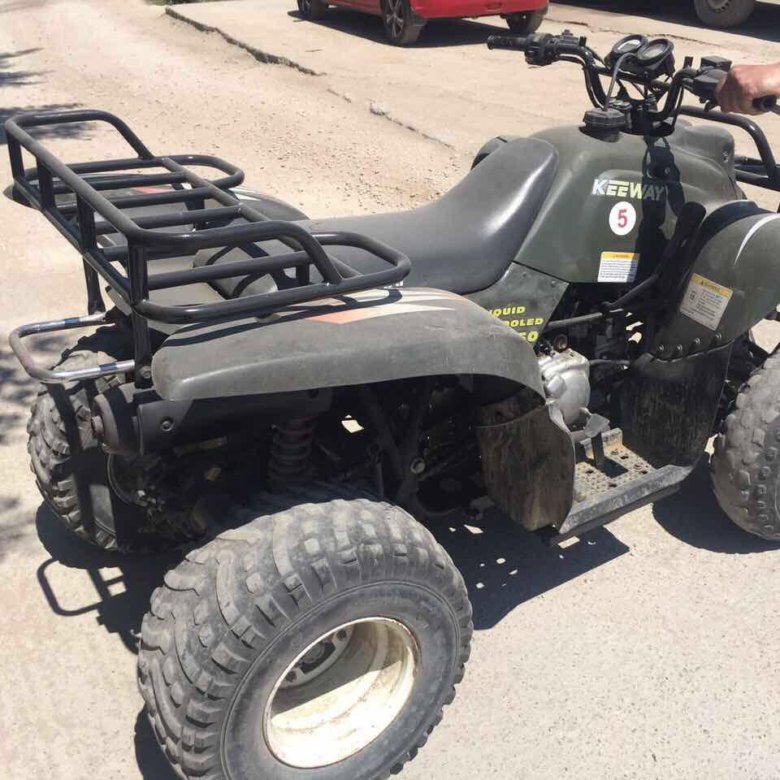 If you are going to be doing more aggressive trail riding, steeper hill climbing, or some towing and hauling, you will probably want to be in the 500 -700 cc range.
If you are going to be doing more aggressive trail riding, steeper hill climbing, or some towing and hauling, you will probably want to be in the 500 -700 cc range.
cc ATV Side by Side
— —— ————
200 40 MPH –
250 50 MPH –
300 53 MPH –
350 55 MPH –
about 45 to 53 mph
Citations:
The Fastest ATV Ever Clocked in Just Under 200 MPH
https://atvhelper.com/top-10-fastest-atvs-from-the-factory-fastest-stock-atv/
https://www.globalsources.com/si/AS/Toptom-International/6008825020400/pdtl/ATV/1002829979.htm
https://itstillruns.com/make-atv-faster-4622480.html
https://www.globalsources.com/si/AS/Toptom-International/6008825020400/pdtl/ATV/1002829979.htm
Top Speed of ATVs and UTVs
https://atvconnection.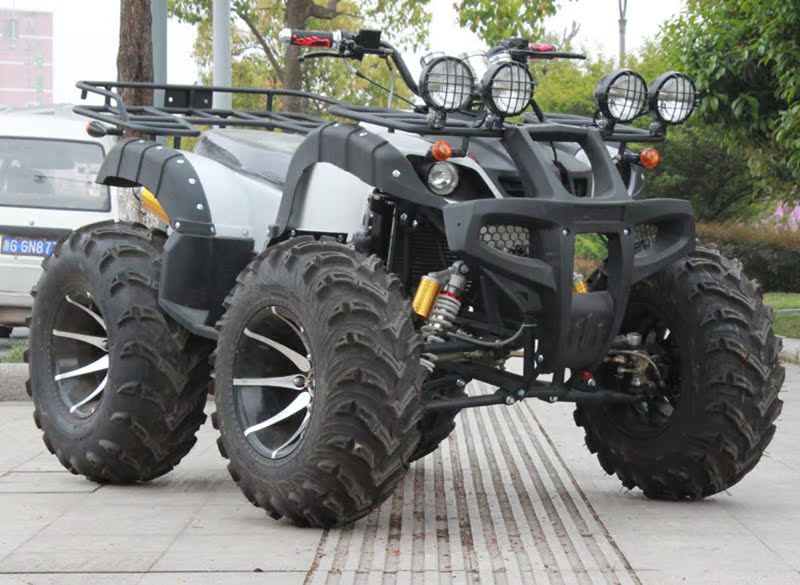 com/forums/suzuki/120635-how-much-faster-quadzilla-s-than-banshee-s.html#:~:text=The%20quadzilla%20is%20faster%20than,the%20banshee%20than%20the%20LT.
com/forums/suzuki/120635-how-much-faster-quadzilla-s-than-banshee-s.html#:~:text=The%20quadzilla%20is%20faster%20than,the%20banshee%20than%20the%20LT.
https://www.globalsources.com/si/AS/Toptom-International/6008825020400/pdtl/ATV/1002829979.htm
Is 150cc ATV good enough for 80kg? How fast will it take me? from ATV
https://www.yfzcentral.com/threads/yfz-450-vs-banshee-350.26690/#:~:text=stock%20for%20stock%2D%20Yfz450%20beats,at%20a%20more%20reasonable%20price.
https://atvconnection.com/forums/yamaha/238609-grizzly-660-h-p-speed.html#:~:text=07%3A43%20PM-,Grizzly%20660%20H.P.%20and%20Speed%3F%3F%3F,60%20%2C%20reports%20of%2065%20mph.
Is 150cc ATV good enough for 80kg? How fast will it take me? from ATV
How Fast Can ATVs Go? (Different CC Engines Compared)
Top Speed of ATVs and UTVs
How Fast Can ATVs Go? (Different CC Engines Compared)
What Size ATV should you Buy?
Top Speed of ATVs and UTVs
https://www.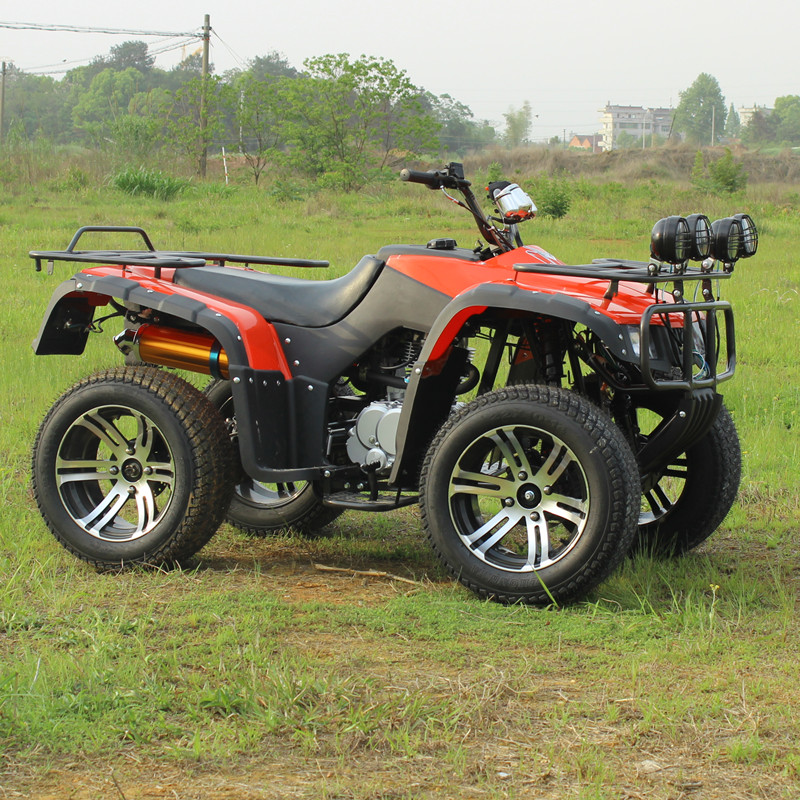 trackeroffroad.com/learning-center/how-fast-will-it-go.html#:~:text=We%20found%20the%20speed%20ranged%20from%20about%2045%20to%2053%20mph.
trackeroffroad.com/learning-center/how-fast-will-it-go.html#:~:text=We%20found%20the%20speed%20ranged%20from%20about%2045%20to%2053%20mph.
Anyone new to ATVs will, at some point, wonder how fast they can actually go. It’s not likely that you will be riding at these speeds very often, but it’s just one of these things we just want to know out of pure curiosity.
Or, maybe you are in the process of buying a new four-wheeler and just want to make sure you won’t get disappointed by the performance of the bike size you are getting?
For most ATV models, you won’t get these numbers from the manufacturers themselves. So I did a little digging to find as good of estimates as possible.
Today’s most powerful sports and utility ATVs can reach top speeds of 80mph (128km/h). Moderate sized bikes averages at about 65 mph (104km/h). Youth ATVs have speed limiters so that the parent can decide exactly how fast it can go.
These are the top speeds of the fastest stock ATVs I could find within each cc engine size. My research included all of the major brands.
* The numbers displayed in this post are based on user data/speedo readings found online. Results may vary from one country to another due to local regulations. I cannot guarantee you will reach these numbers. The numbers are for stock ATVs. ** All speeds are with any original adjustable speed limiters set to maximum speed. *** Actual engine displacement varies from model to model. (a 1000 model may, in reality, be a 950cc and so on)The chart above shows only the fastest of the fastest.
To better understand what top speed to expect when getting a specific engine size, I’ve calculated the average top speed regardless of what brand you are choosing. I compare each manufacturer’s fastest model within each engine size.
Note that many manufacturers have several models with the same engine size, but where the difference in top speed between the two can vary with as much as 5-10mph. In this comparison, I’ve picked only the fastest of the available models.
In this comparison, I’ve picked only the fastest of the available models.
At this point, you may be eager to know what make and model achieves these speeds.
Here are a data sheet showing how fast each model goes, based on reported user experience. Most but not all models are available on the market today.
Click the image for a better view.For all practical purposes, as long as the bike does 50 MPH safely, you really do not need it to go any faster.
But if you decide to push it even further anyways, you will find that it’s neither comfortable, practical, or very safe. It also makes a severe impact on the fuel economy.
When you research different ATV models, you will notice that most manufacturers won’t state their machines top speed in their spec sheets (except with speed limited youth models to show how slow they can go).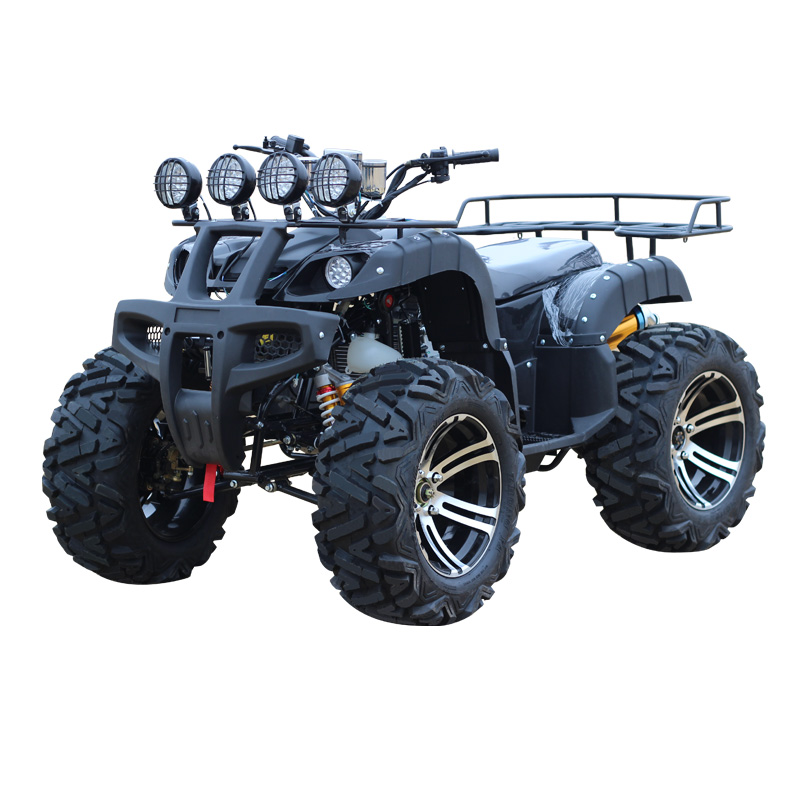
And they have good reasons for not focusing on blazing top speeds.
ATVs are not designed very well to be used at high speeds. They are meant to be powerful at lower speeds and need big engines for this reason. But they are not meant to set any speed records.
The suspension is too soft, the tires are too aggressive, and the CVT transmission non-ideal for higher speeds. The relatively short wheelbase and spacing compared to a car do also negatively affect high-speed performance.
So the manufacturers do not want riders to be pushing to reach potential top speed on their machines, as it’s not what they are really designed for and could end in disaster.
Most manufacturers clearly give disclaimers similar to the one you find on Can-Am spec sheets: “Avoid excessive speed. ” They do so for a reason.
If you’re looking for speed, a motorcycle or a fast car is a much better option.
Racing quads are equipped with upgraded suspension, have a wide tire width, and are ridden by experienced riders.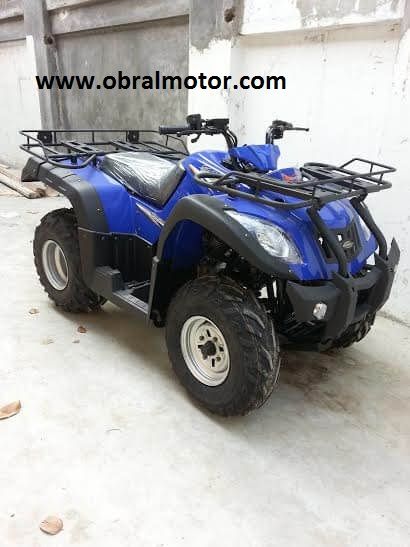 These cannot be compared to your average stock utility or recreation bike.
These cannot be compared to your average stock utility or recreation bike.
Some sports models have better suspension from the factory, but it is still not a machine meant for chasing high speeds.
You will find different types of speed limiters installed on many of the ATVs on the market for various reasons. You’ll even find this on “unrestricted” top performance bikes like the Polaris Scrambler.
But the real purpose of why they are installed varies somewhat depending on what type of bike you are getting.
You’ll often find that it’s not actually the engine size (displacement) that’s the limiting factor of how fast the quad goes. There is usually plenty of power available for even higher speeds.
But the speed needs to be restricted at some point to protect those of us that don’t understand the extreme dangers involved with doing these speeds themselves. So they install limiters.
The same is true in most cars, motorcycles, and any other high performing machine.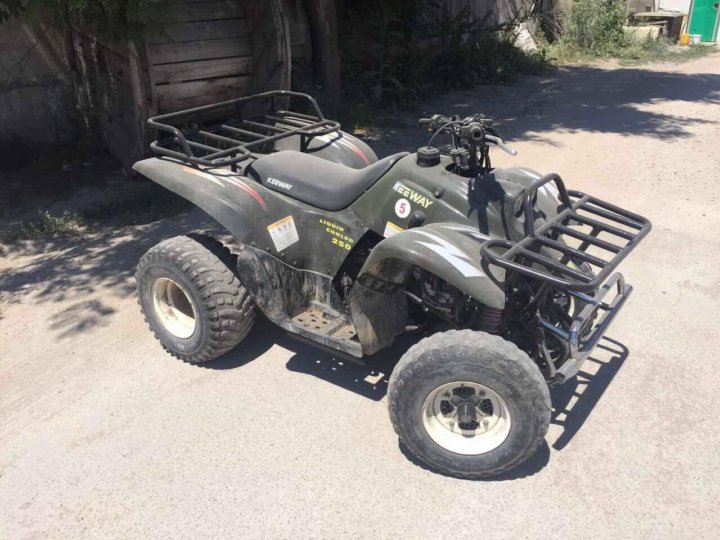 Usually, they are set to a speed so high that it is not something one would ever notice for the average user. You will never be going this fast anyways.
Usually, they are set to a speed so high that it is not something one would ever notice for the average user. You will never be going this fast anyways.
But it helps to explain why there are noticeable variations in top speed on quads with identical engine size but from different manufacturers in some cases.
You will even find bikes with smaller engines that outrun the bigger ones. Often this is likely due to a limiter set at different maximum speeds.
I strongly advise against messing with the top speed limiter on these bikes. It is there for a good reason!
A mechanic speed limiter uses a mechanical barrier to prevent you from applying full throttle.
This can be in the form of an adjustable screw on the handlebar, plastic parts inside the carburetor, or shims limiting airflow in various places inside the engine. Other types exist as well.
Electronic limiters are typical on bikes with electronic fuel injection.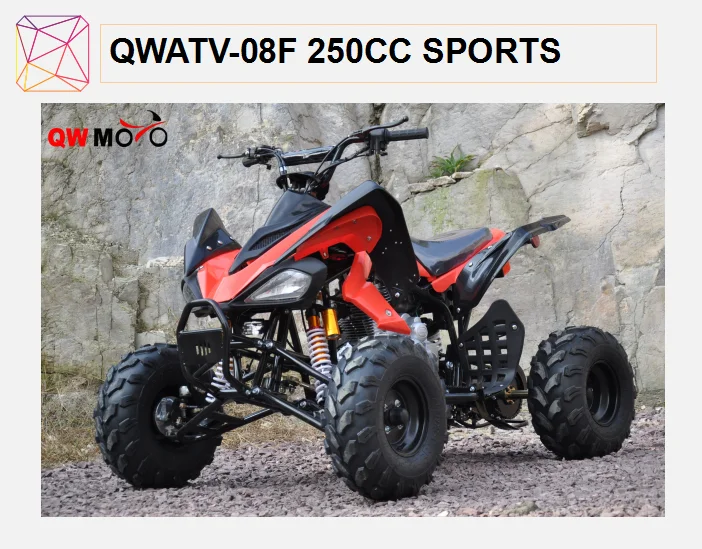 The fuel injection system gets notified to cut back on fuel as soon as the ATV reaches the set limit.
The fuel injection system gets notified to cut back on fuel as soon as the ATV reaches the set limit.
Speed limiters are installed on children’s and youth ATVs as a critical safety feature to protect beginners and inexperienced riders.
Some bikes come with adjustable limiters so that the parent can increase speed gradually as the riders riding skills and experience increase.
Most of the smaller sized ATVs are capable of speeds in the range of 30 mph with some light tuning, removing speed limiters, etc.
I’m not telling you this because I advise you to do so but so that you’ll understand why there are such significant variations in the top speed of the presumably identically sized smaller bikes. It is, in most cases, not due to huge variations in actual engine performance.
For older beginners, Can-Am includes a learning key that holds a code that electronically limits the bike’s speed. This is a great safety feature I hope more manufacturers will offer in future models.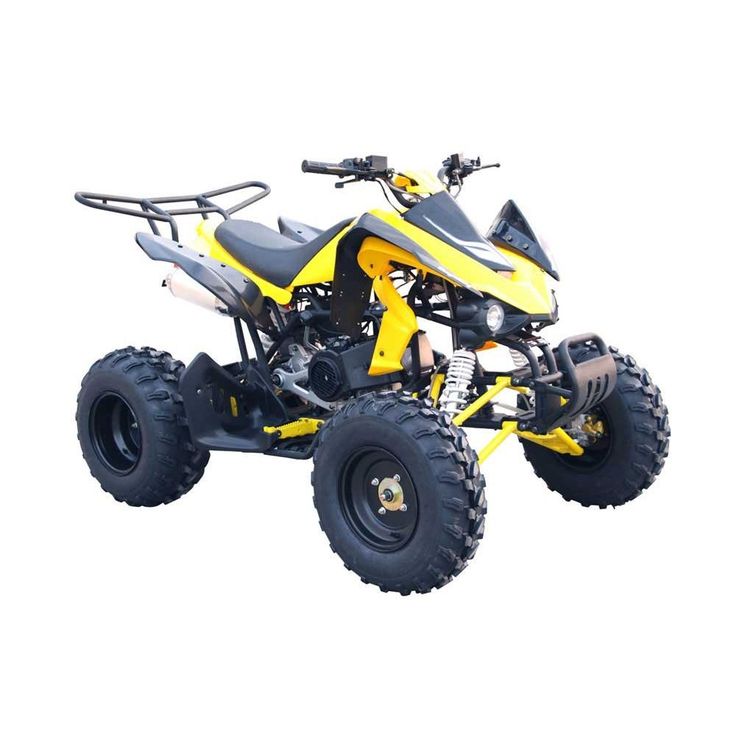
When you install tracks on the quad, you give up a lot of the speed at the same time. As a general rule of thumb, you may expect the top speed to drop by about 50% due to the sprockets’ different output ratio.
Installing tracks will impact your top speed.Because of this, the internals of your bike needs to move twice as fast to maintain the same speed when running in the same gear and with the same RPMs.
It’s wise to keep this in mind when you’re chasing top speed with your new tracks. It put a lot of strain on your gearbox, diffs, and CV-joints.
If you, despite the warnings, still wish to increase your bike’s top speed, there are several ways you can go about it. Disclaimer! All modifications are done at your own risk! I do not recommend any of them.
Bigger tires have a larger circumstance, which means the tire travels farther pr. revolution. This will effectively increase the top speed of your bike.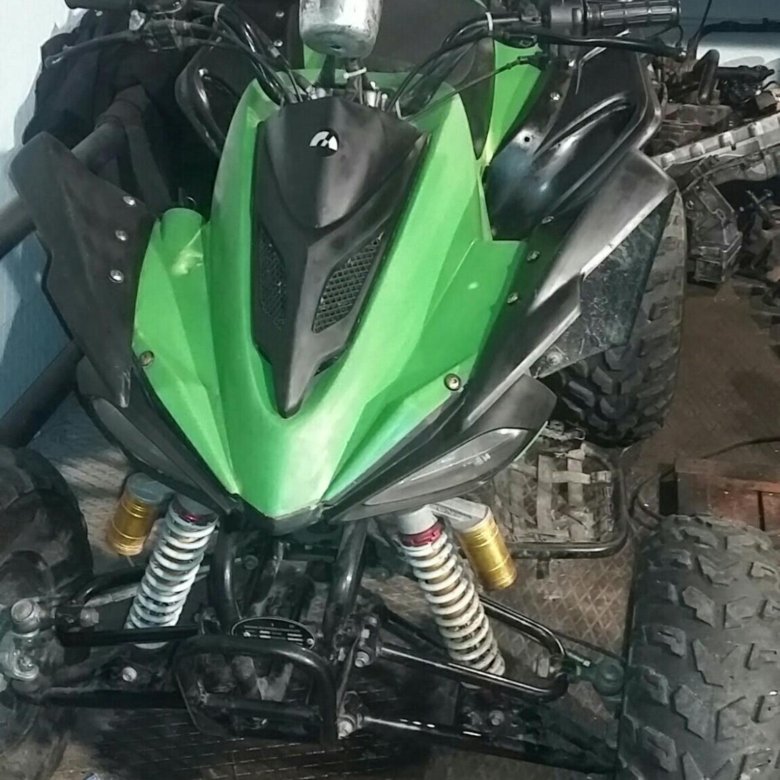
Remember that you also need to install a clutch kit if you increase tire diameter by more than a couple of inches. If you don’t, you will lose a lot of power and may face belt slipping issues and burning belts.
If your bike has a gearbox with sprockets and chains, you can change one of the sprockets to increase your top speed. However, this is actually most commonly done to reduce top speed and simultaneously improve acceleration by installing a smaller sprocket.
By installing a racing clutch, you can choose one that uses different dimensions of clutch sheaves, altering the bike’s top speed according to your needs.
I won’t go into the details on how to increase the power output of your bike’s engine, as this subject deserves a post of its own. But doing so will also give you an improvement of top speed.
This one is quite obvious, but removing it will improve your top speed if your bike has any speed limiter installed.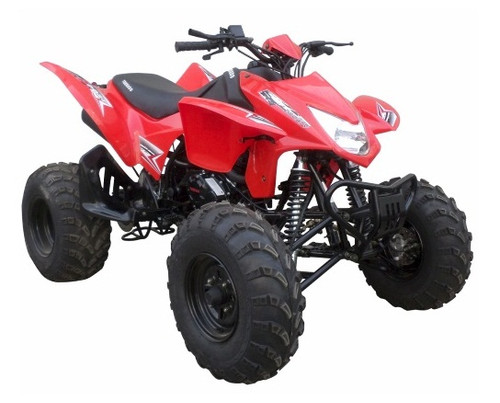 Be aware you may be voiding your warranty and breaking a few laws if you decide to go this route.
Be aware you may be voiding your warranty and breaking a few laws if you decide to go this route.
Mechanical speed limiters are the easiest to remove as they usually require you to slightly disassemble and remove the part that is limiting your throttle.
However, if your bike has an electronic speed limiter, you may need reprogramming of the bike to disable the limiter. Some dealers do this for you; others don’t.
For my Polaris Sportsman XP 1000, there wasn’t any software available to remove its top speed limiter of 60km/h (37,3 mph). This particular bike is sold as a tractor required by law (Norway) not to go any faster than this.
If your bike has an open sprocket and chain, altering top speed is easy. Increasing the size of the front sprocket (clutch) and reducing the size of the rear sprocket (axle) will both give you a higher top speed.
People into quad racing tweak gearing ratio to find the optimal setup for each track they are racing.
Tracks with long stretches require higher top speeds, while tracks with many turns benefit from a better acceleration at the expense of higher top speeds.
As I mentioned, most bikes will actually have an electronic speed limiter to prevent riders from attempting speeds much higher than the machine is really designed for.
The limiter on Polaris Scrambler XP 1000 kicks in at about 80mph, but there have been reports of people reaching speeds in the range of 100mph simply by flashing new software to their bikes ECU.
The Scrambler XP 850 even has a higher stock top speed, with the limiter reportedly set at 83 mph.
Again, I strongly advise against doing these modifications. And quite frankly, I don’t really see the point of it unless you are into some serious racing. And don’t get me wrong, I love speed. Just not these kinds of speeds on an ATV.
What is the world’s fastest stock ATV on the market?
The fastest stock ATV you can buy today is the Polaris Scrambler XP 1000.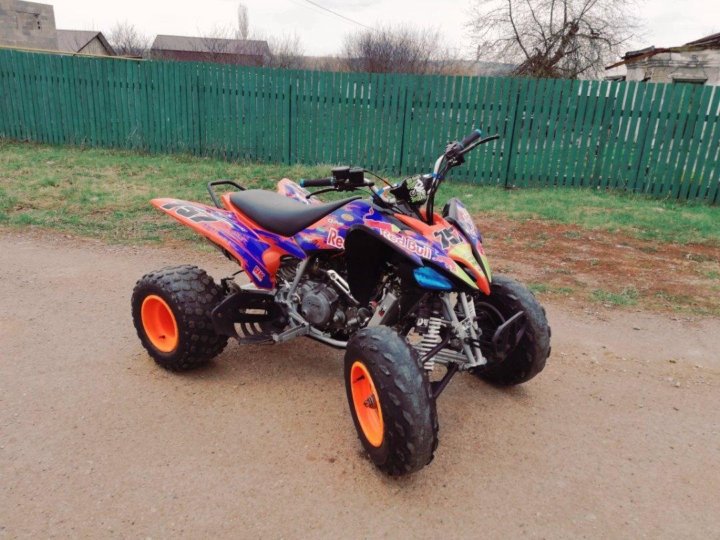 With its 90 hp, it’s been clocked at speeds over 80 mph (128 km/h).
With its 90 hp, it’s been clocked at speeds over 80 mph (128 km/h).
What is the fastest ATV in the world?
According to the Guinness book of world records, the fastest speed ever achieved by an ATV was 196.19mph (315.74 km/h). The rider was Terry Wilmeth, and the bike was a modified Yamaha 700 raptor. Fitted with a hybrid rocket thruster.
Given that you are here and want to recognize the full throttle of a 125cc ATV, you need to know what an ATV is and also how fast a 125cc ATV is.
For beginners, an ATV is short for ATV. All-terrain vehicles of all types of soil provide the ATV with a large area.
125cc ATV mainly for youth. This is a safe choice for beginner bikers who are new to this and also want to get more information about driving as well as the roads.
Whenever we talk about 125cc, it is considered to be in the middle category because it can reach top speed and provide enough traction to help you get through the dirt without any problems.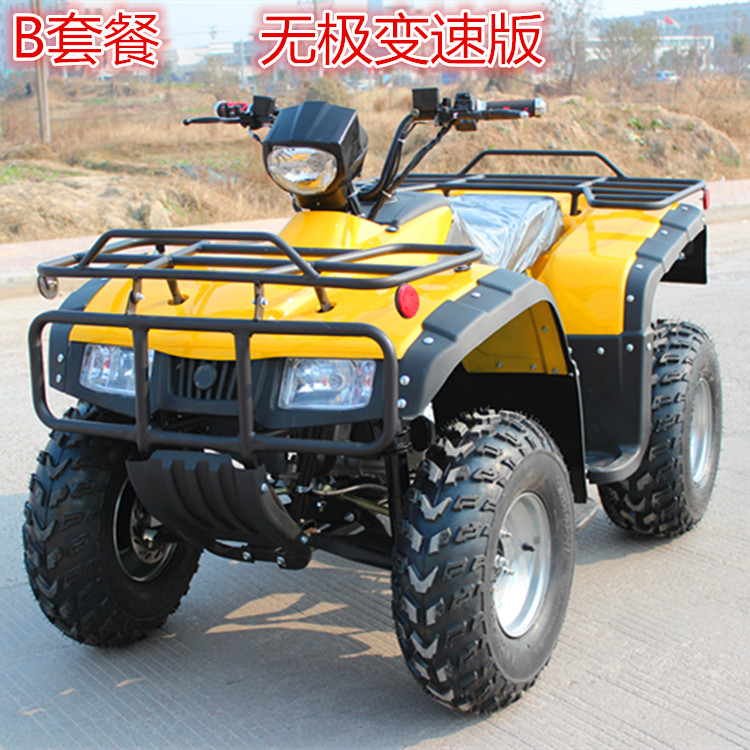
When it comes to ATVs, top speed refers to the highest degree of speed a vehicle can achieve when traveling on the road. Full throttle varies from bike to bike and depends on a variety of factors which consist of the types of materials used and the components installed.
Contents
What does 125cc mean? The 125cc engine will take up 125cc, while the larger 700cc engine will take up 700cc. The more cubic centimeters an engine has, the more air and fuel it can consume, which usually results in more power.
125cc ATV can go up to 40 mph ideally . You can slow down to 10 mph and sometimes 5 mph, or you can hit the gas all the way to 40 mph. Youth ATVs are equipped with speed limiters to control their speed. .
Thanks to its many uses, the 125cc ATV The is a great choice as a starter choice for teenagers as well as the for toddlers as it is fast enough to keep their passion going as well as running at around 22 mph or 38 mph.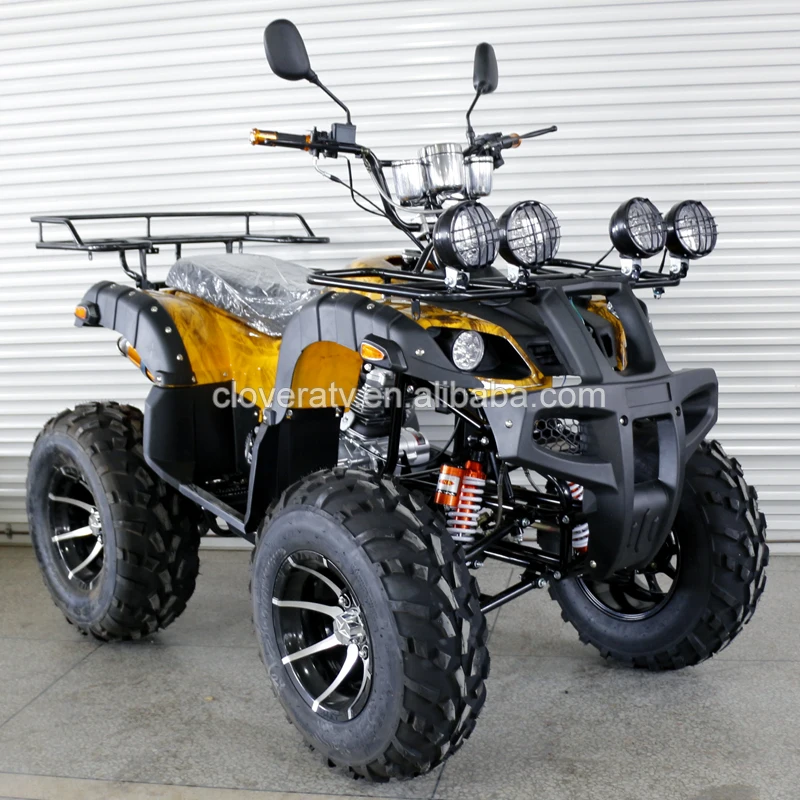 Most importantly, this is a great beginner quad, not powerful enough for serious riding technique, jumping, big climbs or racing.
Most importantly, this is a great beginner quad, not powerful enough for serious riding technique, jumping, big climbs or racing.
Choosing the right engine for you or your child is extremely important when buying an ATV.
Depending on the power of the cylinder, you will surely be able to choose the right ATV for you. Look into joining a list for a better understanding.
Approximately 70 cc - these are used for children up to 11 years of age.
70 to 90 cu. cm - they can be used by teenagers aged 12 to 15 years.
From 125cc to 250cc - Suitable for beginner teens and adults alike.
Cylinder size can start at 50cc and go up to 700cc.
But keep in mind that height is also an important factor when choosing an ATV. Classification from 125 to 250 cu. CM is ideal for beginners who are not familiar with wilderness riding and are unfamiliar with rough or rocky roads.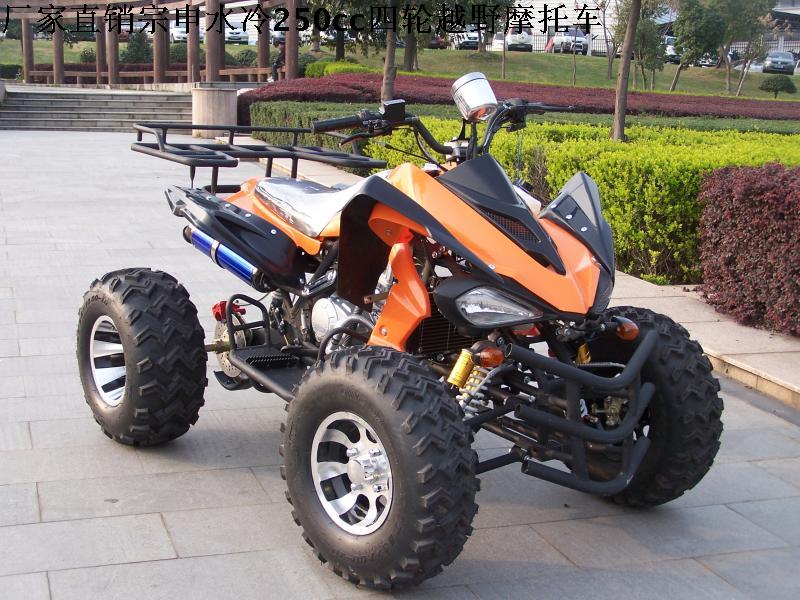 One of the most practical tools for adults or professionals ranges from 450cc to 700cc.
One of the most practical tools for adults or professionals ranges from 450cc to 700cc.
If you are looking for an ATV for your child, you don't have to worry as you stay in the best area. From the list above, it can be seen that engines from junior to 90cc are suitable for children. But to boost the performance of an ATV, different brands have gone to great lengths to find some fantastic 125cc ATVs specifically made for kids.
They are supervised by professionals to make sure they are absolutely safe for children. Each kids quad has unique features as well as additional safety options. If your child loves the outdoors and travelling, an ATV can offer the best taste of nature and flexibility to their hearts, while the controls are still in your hands.
If you do a thorough research, you will certainly be able to find the right one for your child. A couple of points that might help is to make sure you buy one with a speed limiter and it has both headlights and taillights installed as they help a lot.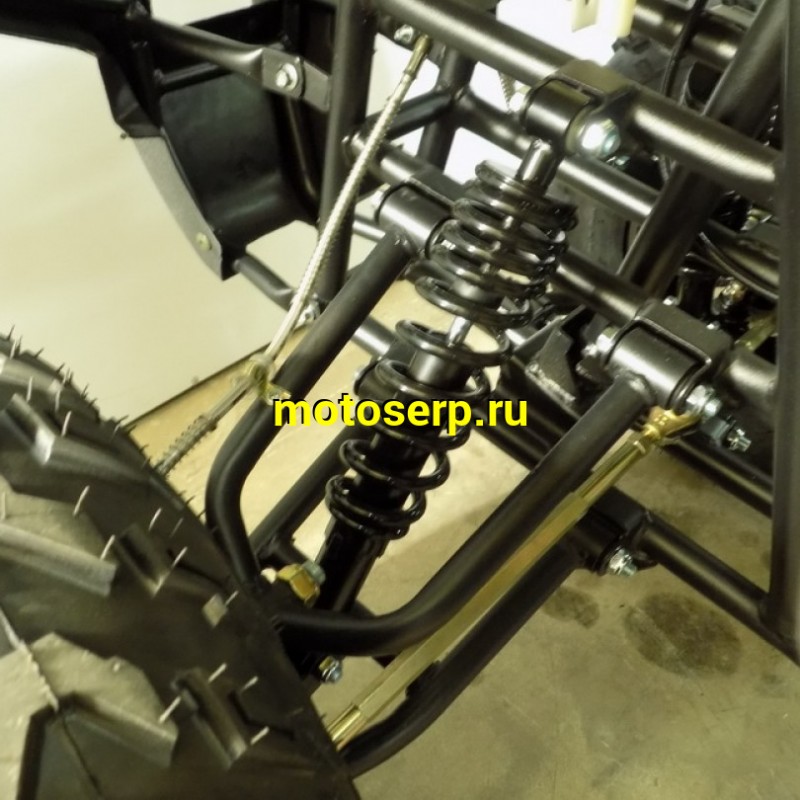
ATV suppliers generally do not set biker weight limits for their youth models. It has optimum load capacity 364 lbs , engine stop button, and push button starter controls. Higher center of mass - overturning issues.
While a full-size ATV with a huge engine may be suitable for an adult, the risk of injury to a child on such a device is much higher. For shorter cyclists, the 125cc ATV is a good choice for the . The 125cc ATV is not the smallest available, however it is not exceptionally large or powerful compared to other models.
1. Use the best fuel.
A quick and easy change you can make is to start using higher octane gasoline. Many ATVs don't need to use higher octane fuel from the manufacturer, but this can help. increase the efficiency of your engine .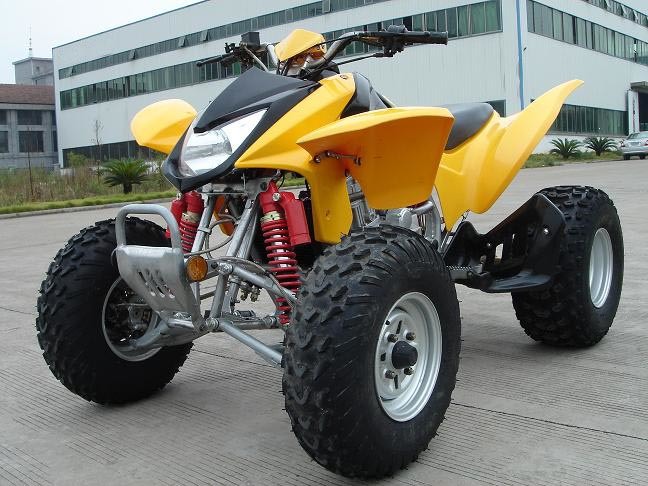
If you can, do not use ethanol-based fuel, and also choose fuel with a higher octane rating of . It will cost a few dollars even more than inexpensive fuel, but you will definitely notice the difference when you step on the gas pedal.
Higher octane gasoline burns cleaner, providing better gas mileage and much less wear on the mechanical parts of your gas system. Of course, the best gas mileage on an ATV is not as noticeable, but there is a difference in performance.
2. Upgraded air filter.
You must be regular inspection of the air filter and clean it if necessary. If the air filter starts to get overloaded, it will certainly affect the amount of air the engine can use to run. Driving with a clogged air filter is almost like turning off your engine.
The increased air circulation these filters provide will definitely allow your engine to get even more air. Much more air-fuel mixture means even more power.
3. Adjust the throttle stop screw.
On many ATVs, if you look to the right side of the handlebar where the throttle is, you will see the boss. A screw will stick out on the handle, this is the throttle limiter. Throttle limiter will limit the amount of throttle You can provide your engine while driving.
Be sure to turn the screw all the way out if you are going to use the maximum throttle. To adjust this, simply loosen the lock nut holding the throttle stop screw in place, replace the screw, and tighten the lock nut by pulling it back.
Check the throttle limiter screw to make sure you are getting the limit your engine can turn on.
4. Change tire size, weight and pressure.
Of course, tire pressure depends on the type of terrain you drive. When riding in sand or snow, lower tire pressure will certainly make you much faster, but on flat, hard surfaces, higher tire pressure can help a lot.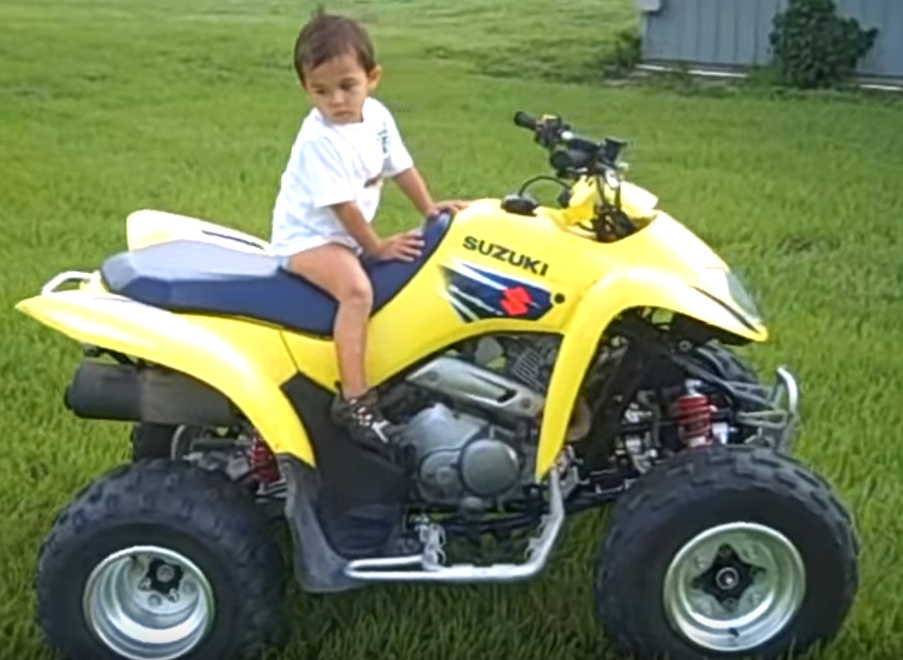 more. I would of course 9The 0007 is recommended to run at around 5 psi as good throughout the entire number.
more. I would of course 9The 0007 is recommended to run at around 5 psi as good throughout the entire number.
If you want to make your ATV faster, you need lightweight aluminum wheels. Tire size can also make a difference, depending on what you're doing. Make sure you choose the right tire size for your ATV and your edges.
If you want much more speed, choose a smaller tire. If you need a higher top speed, choose a larger tire. Tire size is very comparable to replacing your tailoring sprocket. A larger tire will need even more power to convert it, but will cover a larger area in one change. I usually don't change tire sizes unless I'm trying to increase the ground clearance of my quad.
5. Add nitrous oxide.
Adding a nitrogen kit to your ATV can give you a nice speed boost when you really need it. In fact, they are not that difficult to install or use.
There are several different nitrous oxide configurations you can choose from, such as wet or completely dry.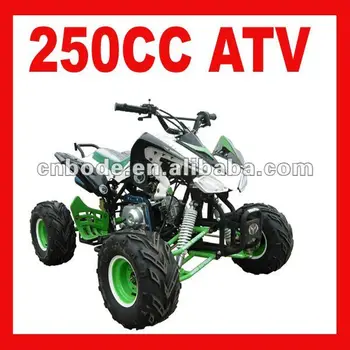
6. Update the exhaust.
Upgrading the exhaust system on your ATV can be expensive and require some work. However, this is a surefire way to improve the efficiency of your ATV. Since more air can come out of the engine, it can take in much more air. . This unit works perfectly in parallel with a high flow air consumption system.
If you can't pay for an entire exhaust system from the exhaust manifolds down, you can always get an efficient overhead exhaust. It won't boost power as much as an efficient exhaust system, but it will certainly give you a bit more horsepower.
Generally, service exhaust systems are larger than the supply, or are definitely tapered for gradual increase in size. This provides even more airflow through the engine. With even more combinations of air and gas, you will really feel even more power and speed while riding.
7. Change the gear ratio.
To change the equipment ratio, you will definitely need to get a new front or rear sprocket and change the existing one. Many cyclists do what's called "downshifting" where you get a big rear sprocket to increase speed. This will cause your full throttle to drop.
Many cyclists do what's called "downshifting" where you get a big rear sprocket to increase speed. This will cause your full throttle to drop.
To "prepare" you should get a smaller rear sprocket, which will certainly increase your full throttle, but decrease your speed.
You need to decide whether you want to increase speed or increase full throttle.
8. Install the large diameter kit.
Fitting a large bore kit may require a lot of effort but will greatly increase productivity. Acceleration will be faster and top speed will certainly increase as well. Usually you increase the size of your engine.
With more sets of large bores, you will definitely be changing piston and cylinder for a larger size. This allows more air/gas mixtures to enter the combustion chamber, greatly improving the performance of your ATV.
After all this talk, it's safe to say that the performance of an ATV depends a lot on performance as well as engine size.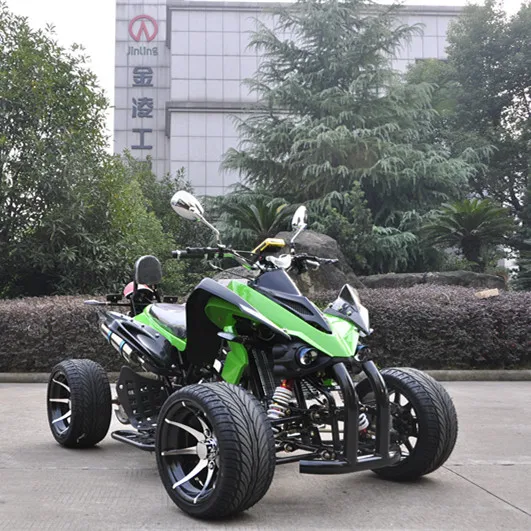 A 125cc ATV is best suited for youth or adult beginners. ATV's top speed can be up to 40 mph (ideally). or even more if changes are made.
A 125cc ATV is best suited for youth or adult beginners. ATV's top speed can be up to 40 mph (ideally). or even more if changes are made.
With a speed controller or adjuster you can control the speed. Because ATVs are built to ride on rough roads, it's a good idea to focus more on performance than speed. You do not need such a high speed for driving on rough roads, as safety and comfort are more important in this situation.
How fast does a 300cc motorcycle go? Detailed view
Rodney L. Herron
Rodney L. is a technical writer and product consultant with over a decade of experience in the automotive industry. Rodney is a fan of high performance machines that run fast and loud and is an expert in all things custom. His numerous articles and reviews are available in our knowledge base. Whether something is wrong with your bike or you are building a custom bike, you can trust Rodney's experience.
Content
A growing number of companies producing all-terrain vehicles designed specifically for children.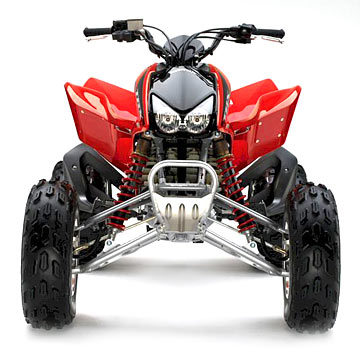 These quads come with smaller motors and larger brakes as well as safety features.
These quads come with smaller motors and larger brakes as well as safety features.
Here we go over exactly what you need to consider when buying an ATV for your child (5,6,7,8,9, 10 and up), especially the 50cc.
We will discuss:
Six years is the ideal age for your child to start riding an ATV. The smallest four-wheeled vehicles are usually designed for children aged six and over.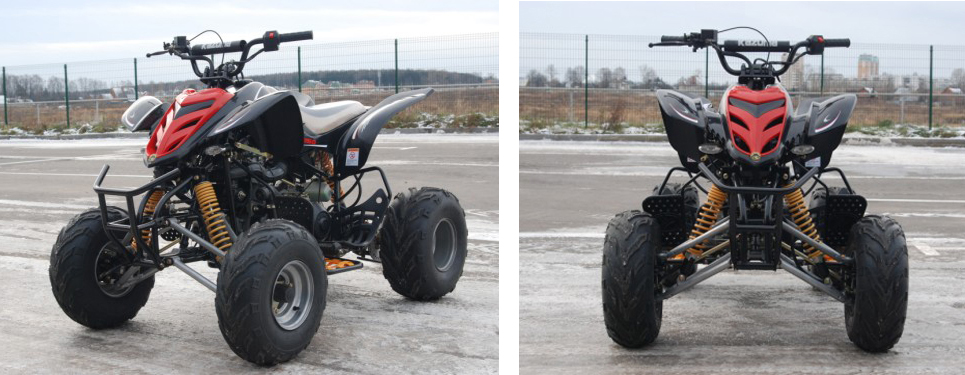
If you are planning to teach your little one to ride an ATV, it is highly recommended to start at a very young age, but children under six may not have the strength to handle an ATV safely.
Many types of ATVs are available for children. They are very light and are powered by a 50cc battery or gas engine. As you can see from the video, they tend to be quite slow.
Once your young rider has mastered the basic skills needed to operate an ATV, he or she should be ready to move onto a 50cc ATV. 50cc 4 wheeler quad small and light, usually without suspension. It is also equipped with a limiter for maximum speed.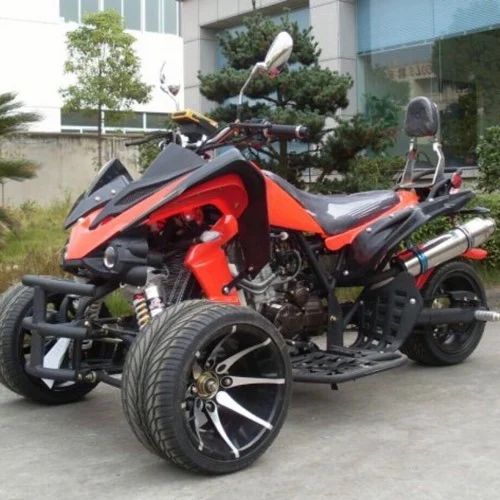 It's important to keep a slow pace when your child rides an ATV for the first time. As he or she becomes better and more confident in driving, you can slowly increase the speed.
It's important to keep a slow pace when your child rides an ATV for the first time. As he or she becomes better and more confident in driving, you can slowly increase the speed.
50cc ATV may also have a safety switch connected to a seatbelt that an adult can hold while walking behind the ATV. If you want to stop the vehicle immediately, you can pull the harness and turn off the engine.
Many people think that 50 cu. ATVs are too small for kids who are already experienced riders, even if they are under six years old. However, the reality is that this is not the case. Riding an ATV safely isn't all about experience or skill; it's a matter of strength and size. You must keep your young chauffeur on 50cc ATVs. until he or she is both an accomplished racer and either a six year old or the physical equivalent of an average six year old. A 50cc all-terrain vehicle with four gears can travel at over 30 miles per hour, and a person needs physical strength to operate the ATV at those speeds.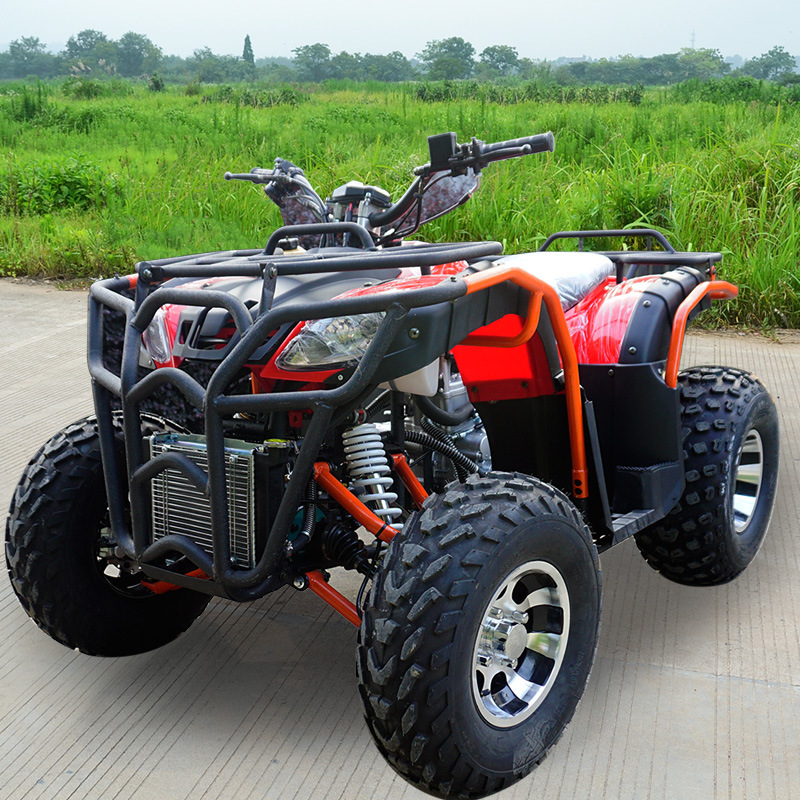
When it comes to ATVs, the ideal size for your child will depend on their age and other factors, including their weight.
Experts suggest that you let your child driver sit on the ATV you are planning to purchase and ask your child how he feels in the driver's seat, if he is comfortable and comfortable to sit there. Does your young driver learner feel comfortable when seated? Can he or she get to the steering wheel without extending the arm? Is an off-road ATV comfortable and easy to drive?
Below is a breakdown of ideal ATV sizes by age. Please note that this is not an accurate estimate of the ideal size for your child's age.
As the name suggests, these ATVs come with a 50cc engine, the smallest size in most manufacturers' lineups. This size is best for children six to ten years old.
Popular 50cc ATVs Include:
3
89 cm), which is ideal for a six-year-old novice driver.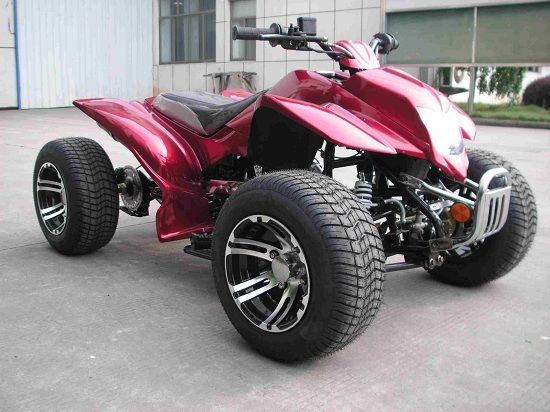 Almost all 50cc kids ATVs come with a throttle limiter that will allow the rider (parent) to set a maximum speed limit so that he or she doesn't have to push the gas pedal hard.
Almost all 50cc kids ATVs come with a throttle limiter that will allow the rider (parent) to set a maximum speed limit so that he or she doesn't have to push the gas pedal hard.
If you have a child between the ages of six and ten, then a 50cc ATV. is the best size for her or him, as long as he or she is not too short or too tall.
The next larger size after 50cc.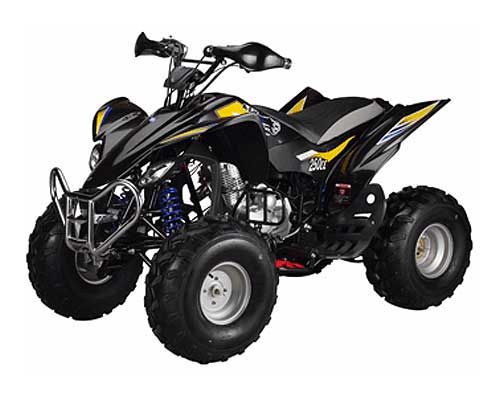 90cc models became more powerful and slightly larger. They are ideal for ten to sixteen year olds. Popular models are Can-Am DS90, Yamaha Raptor 90, and Honda TRX90X.
90cc models became more powerful and slightly larger. They are ideal for ten to sixteen year olds. Popular models are Can-Am DS90, Yamaha Raptor 90, and Honda TRX90X.
Like 50cc ATVs, 90cc ATVs are equipped with necessary features such as rev limiters to reduce speed to an appropriate level.
On average, the price for an average new children's ATV starts at $650, for children 12 years old the price starts at $700.
If you have a large sixteen year old, a 250cc ATV is the best choice. Smaller ATVSs can be overloaded as they are not powerful enough to support the weight of a person of that size. Be aware that many ATVs over 250cc.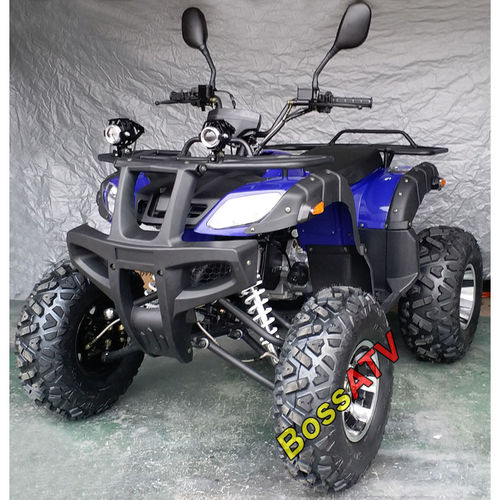 not equipped with throttle limiter or rev limiter.
not equipped with throttle limiter or rev limiter.
Even after you have bought an ATV that meets your child's needs, there are other factors to consider to ensure safety. ATVs are not safe to use as they are, especially for children.
You need to purchase protective equipment for your child: the most important thing is a chest protector and a helmet.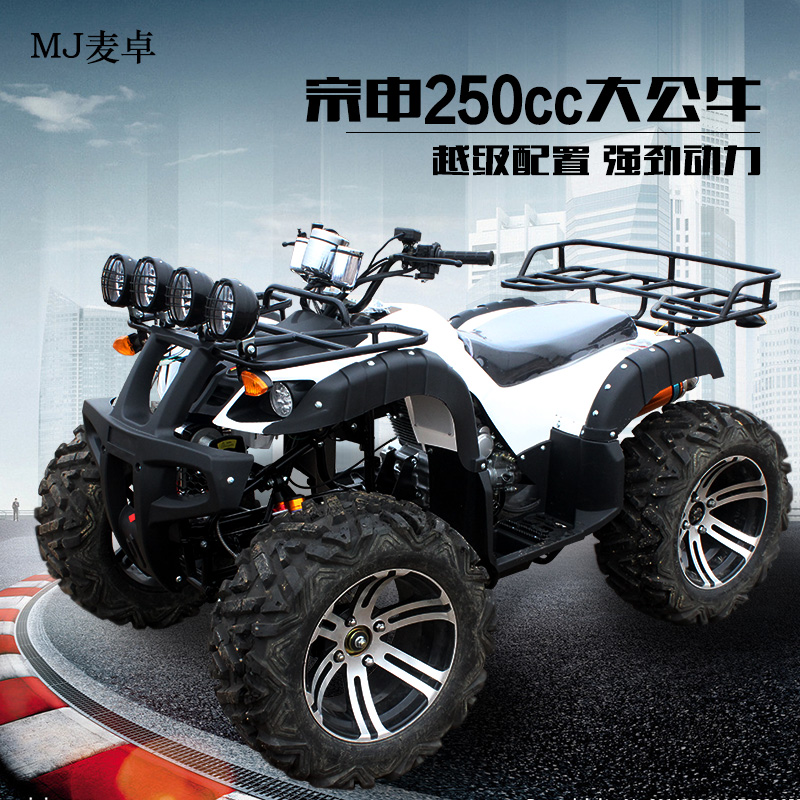 According to studies, more than 30 percent of ATV-related fatal injuries involve either the spinal cord or the head. Therefore, a helmet is very important, while a chest protector will protect your child's body in the event of a rollover.
According to studies, more than 30 percent of ATV-related fatal injuries involve either the spinal cord or the head. Therefore, a helmet is very important, while a chest protector will protect your child's body in the event of a rollover.
You should be looking for an ATV with a throttle limiter that limits top speed to a certain number of miles per hour. Many 50cc ATVs have them. The device limits the power of the ATV, so it can be easily controlled.
Even if you use a throttle limiter, you must take care of your child while he or she is driving. Never allow your child to use at the initial stage of learning to drive - ATVs with a volume of more than 50 cc.
Many parents mistakenly believe ATVs are safe for children, never leave your child unsupervised while using their vehicle.
A crash helmet is highly recommended for maximum protection. Make sure the helmet fits snugly and securely. The AN90 or American National Standards Institute Z90.1 marking indicates that the helmet meets the national testing standard. If the helmet is not supplied with face protection, it must have eye protection indicating the ANSI Z78.1 label.
Make sure the helmet fits snugly and securely. The AN90 or American National Standards Institute Z90.1 marking indicates that the helmet meets the national testing standard. If the helmet is not supplied with face protection, it must have eye protection indicating the ANSI Z78.1 label.
Look for a Department of Transportation (DoT) or SNELL support rating on the helmet. Many low-quality helmets do not have an approval rating because they have not been tested by any of the accredited testing organizations.
When riding, your young rider should wear shoes with sturdy, non-slip heels and soles. He or she must wear trousers, a long-sleeved shirt and gloves.
Operators, regardless of age, must follow ATV regulations such as:
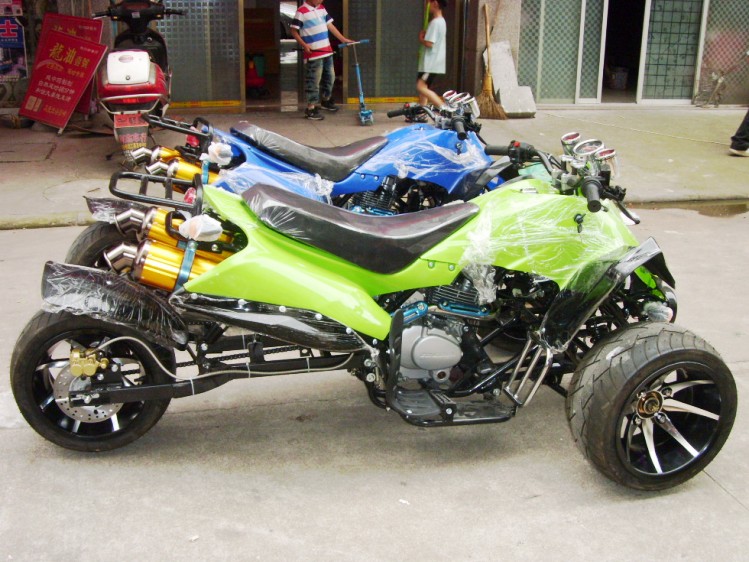
The exhaust and muffler, as well as other hot engine parts, must be protected while your little rider is using the ATV to avoid burns. Dry debris near hot exhaust components can increase the risk of fire.
A 50cc ATV may have a rear brake only or independently controlled rear and front brakes. Your children should be taught how to properly use the brake to reduce the risk of losing control due to hard braking.
This Know the age range suggested by the vehicle manufacturer. Some manufacturers are increasing the age range due to liability issues.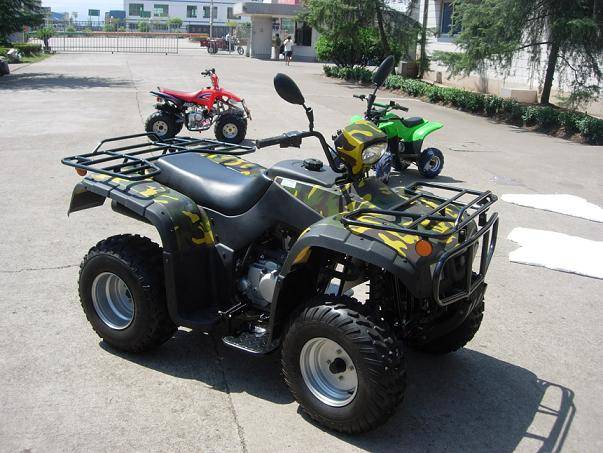 Use common sense and consider your child's strength and height in relation to his or her age, as well as experience with a motorized vehicle.
Use common sense and consider your child's strength and height in relation to his or her age, as well as experience with a motorized vehicle.
You shouldn't put your 5 year old with no ATV experience on a 110cc model, just like you don't want to put your fairly grown teenager in an ATV that has a top speed limit of 10 miles per hour.
Even if your choice of ATVs is limited until the child reaches a certain age, small children can enjoy ATVs. The ATV gives them an edge over other kids who play power sports. ATV teaches self-confidence, courage and responsibility. Your child will feel like owning her or his new ATV.
Dirt bikes and ATVs are used outdoors by both children and adults, leading to a range of sports such as motocross and BMX. It's easier for kids to get into ATVing when they're young. While dirt bikes tend to be a problem when you hit the road, an all-terrain vehicle has the same performance as a small car, making it carefree and exciting.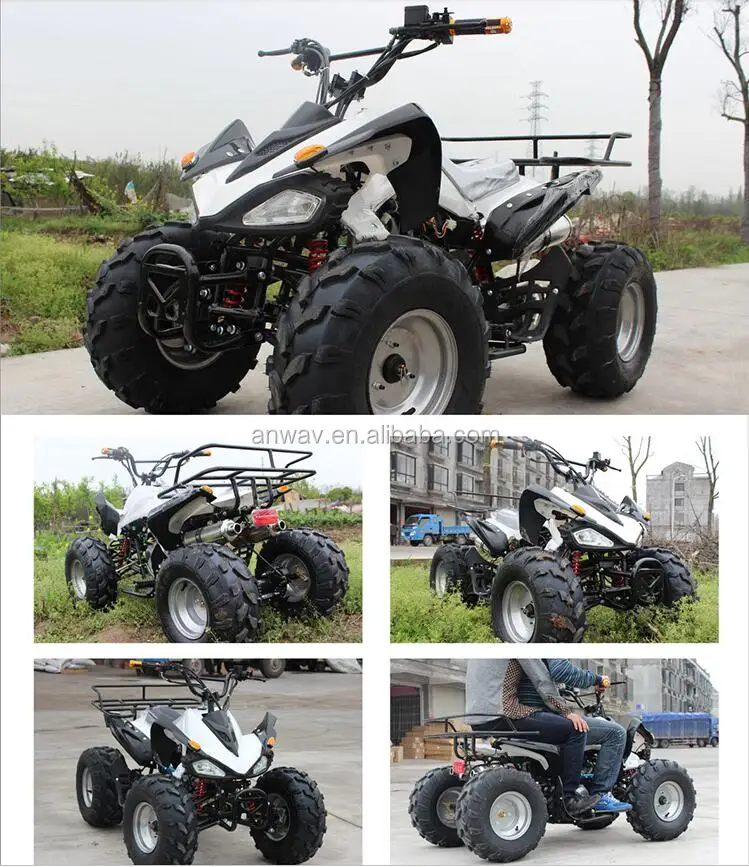
The best thing about ATVs is that kids usually enjoy the control and speed. You can never go wrong buying one for your kids. Just be careful, as their friends will surely want to take a ride and try their hand at the trip.
Below are the things you should think about when choosing a 50cc ATV for your kids. You better check it out!
Today, the best all-terrain vehicles are produced in two main types: electric and motor with gas or gasoline.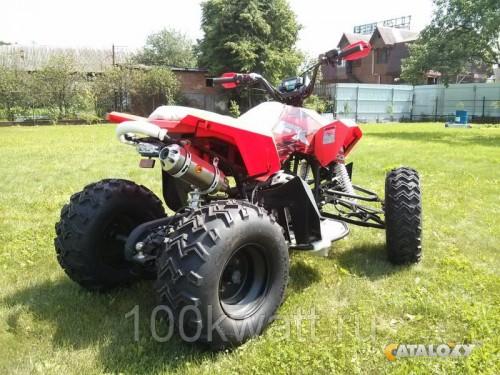 For children between the ages of six and ten, I highly recommend purchasing a powered device for safety reasons. Electric-powered battery ATVs are easy to handle, easy to maintain, and typically last up to an hour of continuous use. There is also no need to buy expensive fuel. Simply plug your device into a power outlet to charge and then unplug it once charging is complete.
For children between the ages of six and ten, I highly recommend purchasing a powered device for safety reasons. Electric-powered battery ATVs are easy to handle, easy to maintain, and typically last up to an hour of continuous use. There is also no need to buy expensive fuel. Simply plug your device into a power outlet to charge and then unplug it once charging is complete.
If you decide to buy an ATV that runs on petrol or gas, your child must learn to use the ATV with extra care and attention.
Generally, an electric ATV won't run as fast as a gas and petrol model. You should look for a device that suits your child's experience and skills.
If your child is just starting to learn how to use this four wheeler, look for a top speed of no more than ten to fifteen miles per hour (up to 30 km per hour). Consider a machine whose top speed you can change as your little chauffeur grows. Instead of buying two or three cars as your kids get older, you can increase the top speed.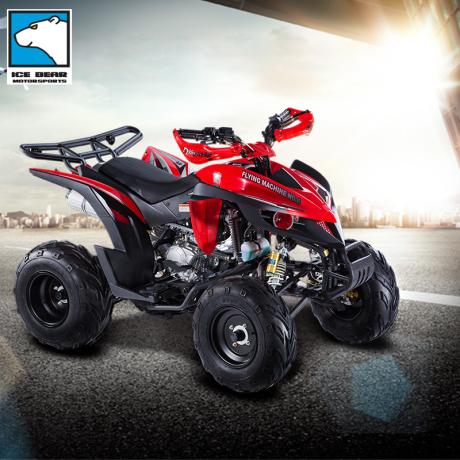 This saves you a significant amount of money in the end.
This saves you a significant amount of money in the end.
Some people don't consider ATV style. But if you are going to spend a lot of money on a quad bike, you can choose something with amazing style and design. Kids love a dirt bike modeled after ATVs and even more when it comes in bright vibrant colors. ATVs with "power wheel" styling or themes from movies and TV franchises would be a smart choice for very young children.
Here are some of the safety features you should consider in a 50cc ATV for kids:
50cc Kids ATV may have additional features such as ample storage space, making it easy to transport snacks and drinks.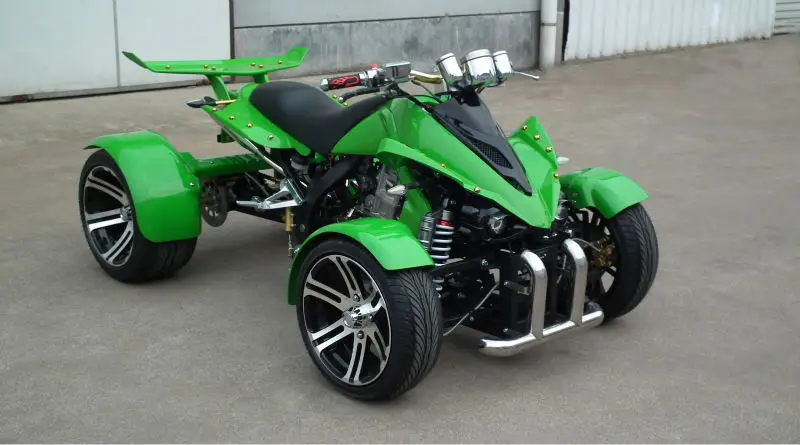
Once you've decided you want to buy a 50cc four wheeler, the next natural question might be where to buy one.
Consider whether you are going to get new, refurbished or used. For the last two, you can head to places like eBay and Craigslist and even the Facebook marketplace, but you potentially run the risk of something going wrong with the car you're buying. If you want to be careful, choose a new one, or at least a used one, officially supported by the manufacturer, or better yet, find a dealer in your city, go and see the device live, and also test it on the spot with your child.
ATV is one of the most common recreational and entertainment investments not only in the US but throughout the world.